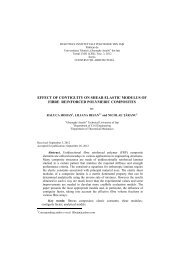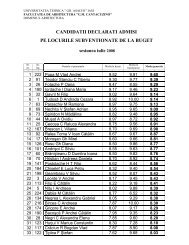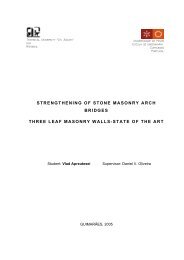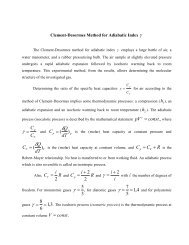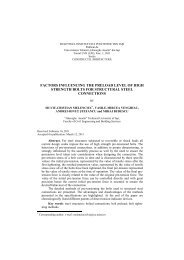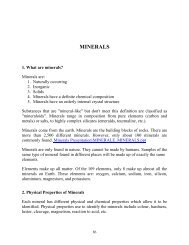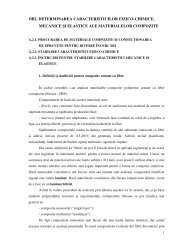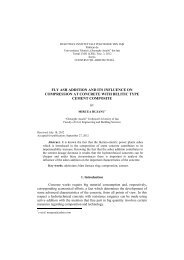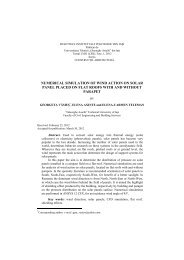evolution of the stability work from classic retaining walls to ...
evolution of the stability work from classic retaining walls to ...
evolution of the stability work from classic retaining walls to ...
Create successful ePaper yourself
Turn your PDF publications into a flip-book with our unique Google optimized e-Paper software.
✐<br />
✐<br />
✐<br />
✐<br />
30 Oana Colt¸ and Anghel Stanciu<br />
resorted <strong>to</strong> placing pretension reinforcements in <strong>the</strong> stretched areas <strong>of</strong> <strong>the</strong> <strong>retaining</strong><br />
wall (Fig. 4 e) [4].<br />
Fig. 4. – Active and passive reinforced concrete <strong>retaining</strong> <strong>walls</strong>.<br />
2.3. Anchored Retaining Walls<br />
The appearance <strong>of</strong> concrete steel and <strong>the</strong> pre-stretched elements favoured<br />
<strong>the</strong> emergence <strong>of</strong> new forms for <strong>the</strong> construction <strong>of</strong> <strong>the</strong> <strong>retaining</strong> <strong>walls</strong>, and <strong>the</strong><br />
development <strong>of</strong> anchored <strong>retaining</strong> <strong>walls</strong> (Fig. 5) [5].<br />
Fig. 5. – Anchored <strong>retaining</strong> <strong>walls</strong><br />
These structures are composed <strong>of</strong> a reinforced concrete element that is<br />
intended <strong>to</strong> convey <strong>the</strong> equivalent <strong>of</strong> <strong>the</strong> active or rest pressure <strong>to</strong> <strong>the</strong> land mass<br />
as possible tensions in <strong>the</strong> pre-stretched anchors. This sustain mainly comes <strong>from</strong><br />
<strong>the</strong> mobilization <strong>of</strong> <strong>the</strong> resistance through anchors.<br />
2.4. Mechanically Stabilized Earth Walls<br />
Starting <strong>from</strong> <strong>the</strong> idea <strong>of</strong> concrete steel and <strong>from</strong> <strong>the</strong> idea that <strong>the</strong> soil is selfsustainable<br />
in <strong>the</strong> slope <strong>to</strong> some extent, it appeared <strong>the</strong> concept <strong>of</strong> reinforced<br />
soil [6]. Thus, <strong>the</strong> basic idea <strong>of</strong> reinforced soil is using reinforcements in <strong>the</strong><br />
form <strong>of</strong> bands, bars, wires and sheets inserted between layers <strong>of</strong> soil and <strong>the</strong>y are<br />
likely <strong>to</strong> take up significant stretching efforts.<br />
However, as in reinforced concrete, <strong>the</strong>y are forming an assembly in which<br />
<strong>the</strong> reinforcements are located on land in <strong>the</strong> direction where <strong>the</strong> soil is solicited<br />
on stretching. In this solution, <strong>the</strong> <strong>retaining</strong> wall does not add additional efforts:<br />
<strong>the</strong> weight <strong>of</strong> <strong>the</strong> material <strong>from</strong> which <strong>the</strong> wall is made, <strong>the</strong> <strong>stability</strong> being given<br />
✐<br />
✐<br />
✐<br />
✐



